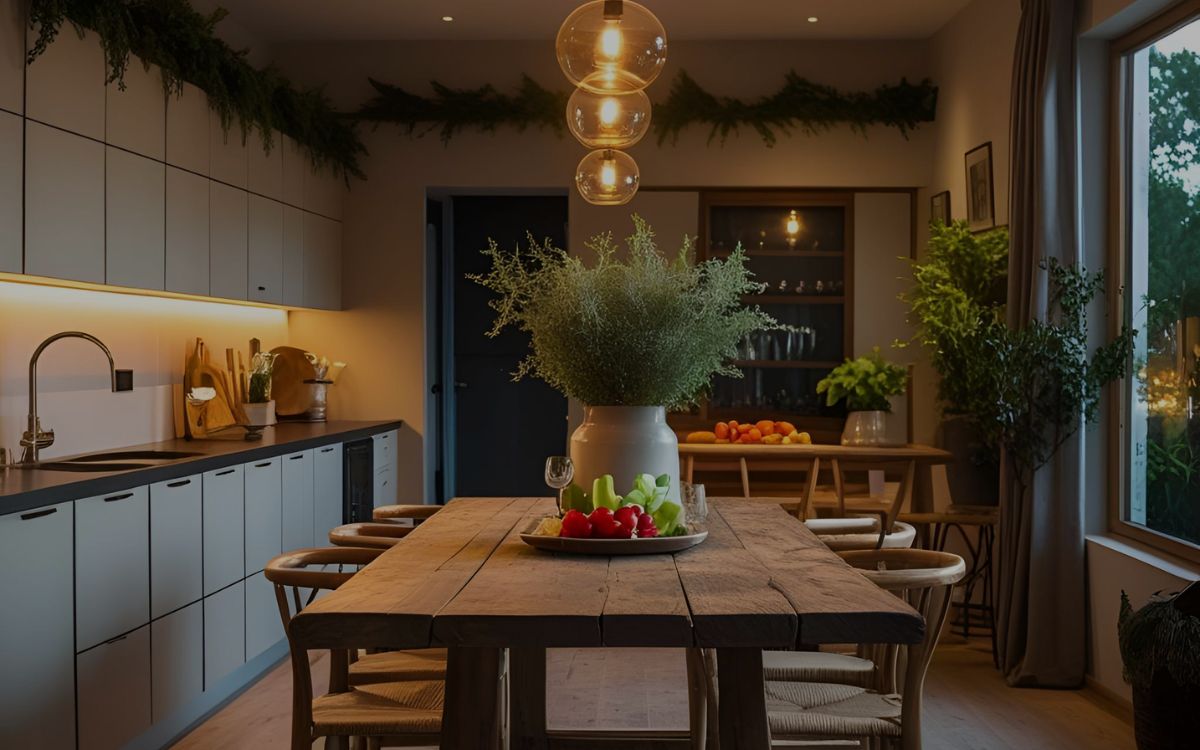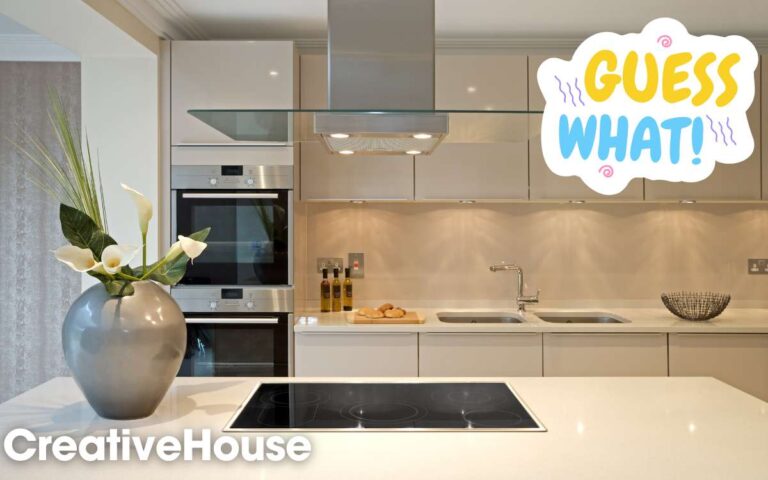Imagine walking into your home and feeling an instant sense of space, openness, and connection. Your kitchen and dining room are not just places to cook and eat; they are the heart of your home.
With the right open concept layout, you can transform these areas into a seamless flow of style and functionality.
Whether you’re entertaining guests or enjoying a quiet dinner with your family, an open concept design can make every moment more engaging and enjoyable.
Are you tired of feeling cramped in your current kitchen setup? Do you wish your dining area felt more inviting and connected to the rest of your home?
You’re not alone. Many homeowners are seeking innovative ways to optimize their space while maintaining an elegant and cohesive look.
This article is your guide to exploring open concept kitchen and dining room layout ideas that can enhance the way you live and interact with your space. Get ready to discover designs that not only look great but also feel great.
You’ll learn about layouts that maximize space, improve natural light, and create a welcoming environment for you and your guests.
Whether you’re planning a renovation or just looking for inspiration, these ideas can help you envision a home that truly reflects your lifestyle. Dive in and see how you can bring your dream space to life!
Key Takeaways

Benefits Of Open Concept Spaces
Open concept spaces have gained popularity in modern homes. They offer unique benefits that enhance everyday living.
Merging the kitchen and dining room creates a seamless flow. It breaks down barriers, fostering a sense of unity. This design elevates both aesthetics and functionality.
Enhanced Natural Light
Without walls, light travels freely across the space. Sunlight fills every corner, creating a brighter environment.
This abundance of natural light reduces the need for artificial lighting. It also makes the room feel larger and more welcoming.
Improved Social Interaction
An open layout encourages family and friends to gather. Cooking and dining happen in the same space. This allows for continuous conversation and interaction. It makes hosting guests easier and more enjoyable.
Efficient Use Of Space
Open concept designs maximize usable space. They eliminate unnecessary walls and barriers.
This flexibility allows for creative furniture arrangements. It also provides more room for movement and activities.
Increased Property Value
Buyers often prefer open layouts due to their modern appeal. Homes with open concepts tend to sell faster.
The spacious feel and functionality attract potential buyers. This can increase the overall value of your property.
Designing For Flow
Open concept kitchens and dining rooms create a seamless flow in your home. This design enhances the feeling of space. It allows for easy movement and interaction. Perfect for family gatherings or entertaining guests.
Designing an open concept kitchen and dining room isn’t just about tearing down walls. It’s about creating a space where everything flows seamlessly.
Picture a room where cooking, eating, and socializing happen without barriers. This design trend is all about making your home feel spacious and connected.
But how do you ensure that this open space doesn’t feel chaotic? Let’s look at some ideas to maintain that smooth flow in your open concept layout.
Consider Traffic Patterns
Think about how you and your guests move through the space. Paths should be clear and logical. Avoid placing furniture in areas where people need to walk frequently.
Imagine hosting a dinner party. You want your guests to move easily from the kitchen to the dining table without dodging chairs or stepping over rugs. Keep walkways wide enough for comfort.
Zone Your Space
Zoning helps define different areas within an open space. Use rugs, lighting, or furniture to create distinct zones.
This not only organizes the space but also guides flow. When I designed my own open concept area, I used a large rug under the dining table.
It naturally delineated the dining area from the kitchen. This subtle cue directed traffic and made the layout feel intentional.
Choose Cohesive Colors And Materials
Your open space should feel like one unified area. Use a consistent color palette and materials throughout.
This creates a visual flow that connects the kitchen and dining areas. For instance, if your kitchen has wooden cabinets, consider a dining table with a similar wood finish. Such details bring harmony to the space and make transitions smooth.
Optimize Lighting For Flow
Lighting plays a critical role in an open concept layout. Different lighting options can define spaces and guide the eye. Pendant lights over the kitchen island and a chandelier over the dining table can create focal points.
Experiment with dimmers to adjust the ambiance based on activity. Bright lights for meal prep, softer lighting for dining—these small changes impact flow dramatically.
Functional Furniture Arrangement
Furniture should support the flow, not hinder it. Arrange seating to promote conversation and interaction. An open concept thrives on social connections. In my home, I placed the sofa facing the kitchen.
It allowed family and friends to chat with whoever was cooking. This setup fostered interaction and kept the space lively.
Think Vertically
Don’t forget about vertical space. Tall cabinets or open shelving can draw the eye upwards and make the area feel more spacious.
This technique helps maintain flow by using space efficiently. Ask yourself if your walls are working hard enough. Vertical storage solutions can keep countertops clear, enhancing the seamless flow of your space.
Designing for flow in an open concept kitchen and dining room is about creating a space that feels harmonious and inviting. How will you ensure your design encourages easy movement and connection?
Maximizing Natural Light
Maximizing natural light in an open concept kitchen and dining room brings warmth. It creates a welcoming atmosphere.
Strategic design choices enhance this effect. The right layout can transform the space. Natural light makes rooms feel larger. It boosts mood and energy levels. Harnessing sunlight is key to a vibrant home.
Choosing The Right Windows
Large windows are essential for natural light. They should face the sunniest side. Sliding glass doors are excellent choices.
They let in plenty of sunlight. Bay windows add elegance. They also capture light efficiently. Consider skylights for extra brightness. They illuminate the room from above.
Using Reflective Surfaces
Mirrors can amplify natural light. Place them opposite windows. They reflect sunlight across the room. Glossy tiles can brighten floors.
They catch light and bounce it around. Stainless steel appliances help too. Their shiny surfaces reflect light beautifully. Choose light-colored countertops for added brightness.
Opting For Light Colors
Light colors on walls are crucial. They enhance the room’s brightness. Whites, creams, and pastels work well.
They make spaces feel airy. Avoid dark shades; they absorb light. Light-colored furniture complements this theme. It maintains the open, bright feel.
Maintaining Uncluttered Spaces
Keep the layout open and uncluttered. Less furniture means more light flow. Arrange items strategically.
Avoid blocking windows with bulky pieces. Minimalist designs work best. They allow sunlight to permeate the room. Clear pathways enhance light distribution.
Furniture Arrangement Tips
Designing an open concept kitchen and dining room can enhance flow and functionality. Consider using area rugs to define spaces. Choose furniture that complements both areas, allowing for easy movement and interaction.
Creating an open concept kitchen and dining room is like crafting a harmonious symphony in your home.
Furniture arrangement plays a crucial role in setting the tone and functionality of this space. If you're looking to transform your area into a seamless blend of style and utility, these tips will guide you to make the most of your open layout.
Maximize Your Space
Think about how you use your kitchen and dining area daily. Consider if you need extra seating for guests or a cozy nook for morning coffee.
Arrange your furniture to accommodate these needs. You might find that a round table fits better than a rectangular one, making the space feel less cramped.
Create Distinct Zones
Even in an open concept layout, defining areas can add structure. Use furniture to create visual boundaries.
A sofa can separate the kitchen from the dining area without needing walls. This subtle division can make each zone feel purposeful yet connected.
Prioritize Traffic Flow
Ensure there’s a clear path for movement. Avoid blocking walkways with bulky furniture. Think about the natural flow—can guests easily move from the kitchen to the dining table? Keep pathways open to maintain a welcoming atmosphere.
Balance Styles And Sizes
Mix furniture styles to add character but keep the scale consistent. Pair a large dining table with equally substantial chairs.
A mismatch in size can disrupt the harmony. If you love eclectic pieces, balance them with neutral items to maintain cohesion.
Consider Lighting
Lighting can be a game-changer in defining your space. Think about overhead lights versus floor lamps.
Can a pendant light highlight your dining table? Use lighting to accentuate your furniture arrangement, creating a warm and inviting ambiance.
Think About Functionality
Does your furniture serve multiple purposes? A bench with storage can be practical and stylish.
Consider how each piece adds value to your space. Look for furniture that provides utility without compromising on style.
Test And Adjust
Try different arrangements before settling. Move pieces around to see what feels right. Sometimes, a minor adjustment can make the space flow better. Trust your instincts and be willing to experiment.
Reflect on how these tips can transform your open concept kitchen and dining room. What changes can you make today for a more functional and inviting space?
Color Schemes And Materials
Explore soothing color palettes and versatile materials in open concept kitchens. Neutral tones blend with wood, metal, and stone, creating a harmonious flow. Soft textures enhance warmth, while contrasting elements add visual interest.
Creating an open concept kitchen and dining room can be a game-changer for your home. A crucial aspect of this transformation is choosing the right color schemes and materials.
These elements can define the space, making it both functional and visually appealing. Whether you prefer a minimalist look or a more vibrant setting, the choices you make will significantly impact the ambiance and flow of your space.
Choosing The Right Color Palette
Selecting colors for your open concept kitchen and dining area can set the tone for your entire home. Neutral colors like whites, grays, and beiges can create a serene and cohesive look.
If you want to add a splash of personality, consider accent walls or bold-colored cabinets. Think about how these colors will flow into adjacent areas.
You don’t want a jarring transition from one room to another. Remember, the goal is to create a seamless experience.
Integrating Materials For Cohesion
Materials play a significant role in tying together your kitchen and dining room. Using similar materials like wood or stone can create a harmonious flow.
For example, a wooden dining table can complement wood details in the kitchen cabinetry. Consider the practicality of materials.
In a high-traffic area, durable materials like quartz countertops or ceramic tiles can withstand daily wear and tear. They also add an element of sophistication.
Balancing Warm And Cool Tones
Balancing warm and cool tones can create a dynamic and inviting space. Warm tones like golds and browns can add coziness, especially when paired with natural light. Cool tones like blues and greens can bring a refreshing and calming effect.
Experiment with different combinations. You might be surprised at how a subtle contrast can make your space pop. Ask yourself: Do these colors make you feel relaxed and at home?
Personal Experience And Touch
When I redesigned my open concept kitchen and dining area, I chose a soft gray as the base color. It was neutral yet modern.
I added a bright yellow backsplash in the kitchen for a touch of cheerfulness. This mix of colors and materials made the space feel both lively and unified.
It also taught me the importance of personal touches. What colors and materials would reflect your personality and style?
Bringing It All Together
Ultimately, your choices in color schemes and materials should reflect your lifestyle and preferences. They should make you feel comfortable and happy in your space.
Don’t be afraid to mix and match until you find the perfect balance. Consider how these elements will affect your day-to-day life.
Will they be easy to maintain? Do they create a positive atmosphere? Your open concept kitchen and dining room should be a place where you love to spend time.
Incorporating Functional Elements
Open concept kitchens blend seamlessly with dining areas by adding functional elements like islands and built-in storage.
These features enhance space efficiency while maintaining a stylish, cohesive look. Thoughtful design choices create a welcoming atmosphere for cooking and dining.
Creating an open concept kitchen and dining room is more than just removing walls. It’s about seamlessly integrating functional elements that enhance your daily life.
By adding smart features and practical designs, you can make your space not only beautiful but also highly efficient.
Let’s dive into some actionable ideas that can transform your kitchen and dining area into a harmonious and functional hub of your home.
Maximize Storage Solutions
Imagine never having to search for your pots and pans again. Smart storage can make this a reality. Consider installing pull-out shelves or deep drawers in your kitchen cabinets. These features ensure easy access and organization.
Floating shelves in the dining area can hold decorative items or everyday dishes, keeping them within reach.
Integrated Appliances
Having your appliances blend into your kitchen design can make a huge difference. Choose built-in refrigerators or dishwashers that match your cabinetry.
This not only creates a cohesive look but also saves precious space. It’s like having a secret weapon for a clutter-free kitchen.
Lighting That Enhances
Lighting sets the mood and aids functionality. Pendant lights over the dining table can create a cozy ambiance.
Under-cabinet lighting in the kitchen can illuminate your workspace for cooking. Think about how lighting can transform your open concept area into a versatile space.
Flexible Furniture Options
Furniture that adapts to different needs can be a game-changer. A dining table with extendable sections can accommodate more guests without taking up extra space daily.
Consider movable kitchen islands that offer prep space and can be tucked away when not in use. How can your furniture evolve with your lifestyle?
Smart Technology Integration
Embrace technology to streamline tasks. Add smart assistants to control lighting or play music while you cook.
Install touchless faucets for convenience and hygiene. These tech-savvy elements can make everyday chores feel like a breeze.
Seamless Transition Between Spaces
Creating a flow between kitchen and dining areas enhances functionality. Use similar flooring materials to unify the spaces visually. Consider using area rugs to define zones without physical barriers.
How can a cohesive look improve your home’s overall harmony? Incorporating functional elements into your open concept kitchen and dining room isn’t just about aesthetics. It’s about enhancing how you live and entertain in your space.
With these ideas, you’re well on your way to crafting a practical and inviting area that suits your needs.
FAQ Of Open Concept Kitchen And Dining Room Layout Ideas
Is It Cheaper To Build An Open-concept House?
Building an open-concept house can be cheaper due to fewer interior walls and simplified structural design. Savings may arise from reduced materials and labor costs. However, overall expenses depend on design complexity and finishes. Always compare specific project estimates for accurate cost assessment.
How To Arrange A House With An Open Kitchen?
Arrange furniture to define spaces. Use rugs to separate areas visually. Add lighting to enhance functionality. Choose cohesive colors and materials for a seamless look. Incorporate storage solutions to maintain organization.
Why Are People Going Off Open-plan Living?
People are opting out of open-plan living due to noise, lack of privacy, and heating inefficiencies. These spaces can feel cluttered and challenging to organize. Many prefer defined areas for better functionality and comfort. Personal spaces offer a sense of coziness and individuality that open layouts often lack.
What Are The Disadvantages Of An Open Kitchen?
Open kitchens can increase noise levels and reduce privacy. They often expose cooking odors and clutter. Heating and cooling may be less efficient, and there might be limited storage. Distractions from living areas can also affect cooking focus. This layout may not suit everyone’s lifestyle or preferences.
Conclusion
Creating an open concept kitchen and dining room boosts space and light. It encourages connection and simplifies movement between areas.
These layouts enhance both function and style. Feel free to mix materials and textures for a unique look. Consider furniture that complements the overall design.
Proper lighting can transform the space’s ambiance. Try different decor ideas to reflect your personality.
Enjoy cooking and dining in a space that’s welcoming and functional. An open concept design can truly make your home more inviting and enjoyable.






